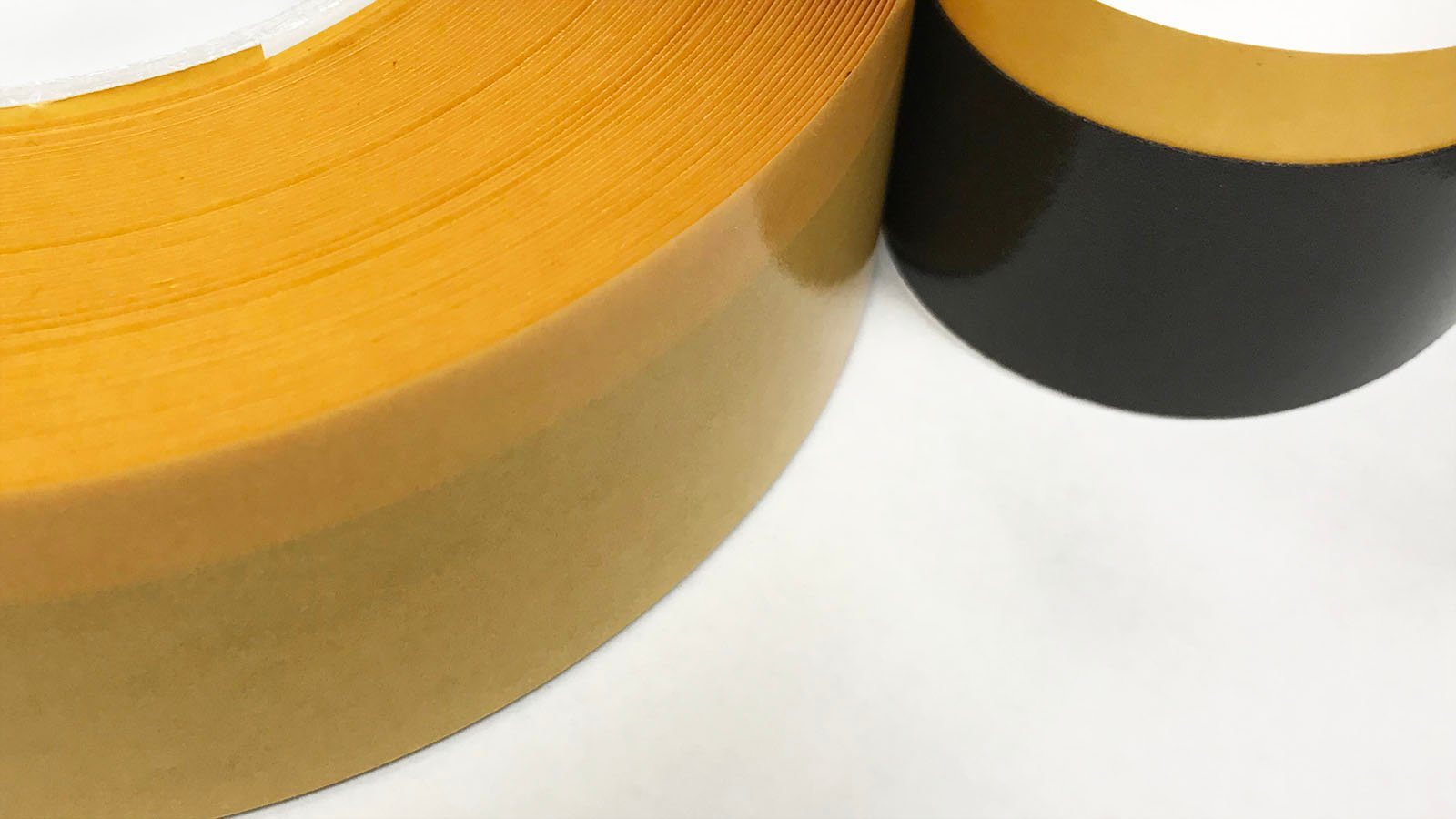Two-sided adhesive foam tape is used in many industries as an alternative to mechanical fasteners. It applies quickly and creates a strong, permanent bond. If you’re considering using foam tape on your project, this article will serve as a brief guide on how to use the tape, as well as explaining cost drivers, and some design principles.
Anatomy of Foam Tape
In the image below, you can see that two-sided foam tape has three laminated sections (with the release liner removed).
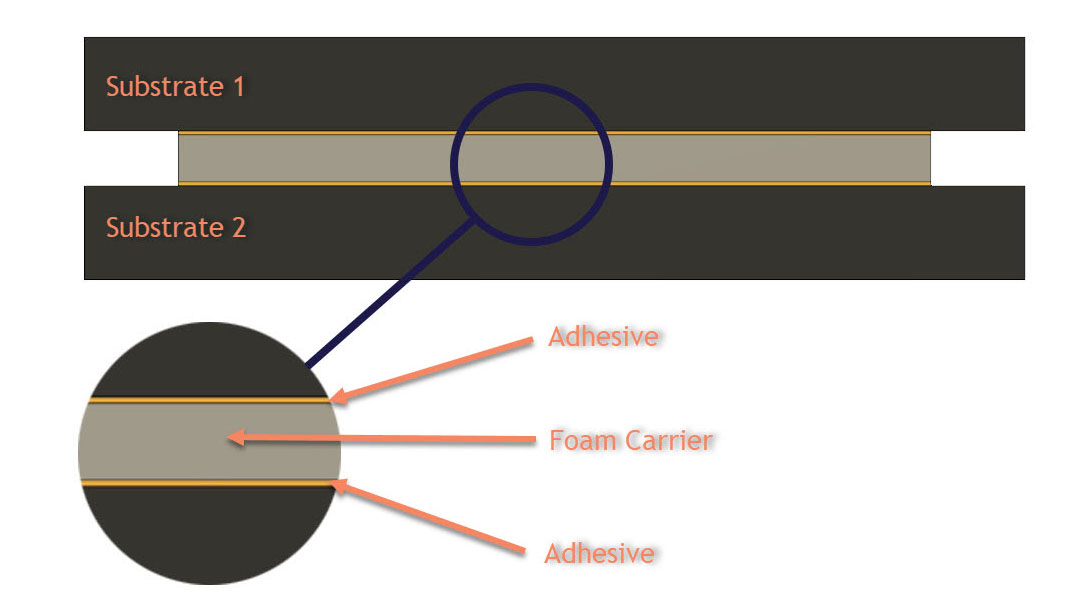
Different Grades for Different Projects
Even if you have never used two-sided foam tape, there’s a good chance you have interacted with some form of it. You will often find the tape used in consumer products, industrial goods, or construction. Each one of these applications use a different grade of tape to provide various material properties. To get a good overview of the different grades, check out this overview from 3M.
Forces
When starting a project, you’ll want to consider how the tape is going to interface between two components. You also want to consider what materials the tape is being applied to and what forces will be applied. When connecting two surfaces with two-sided tape, there will be at least one or, sometimes, a combination of all three of the following forces: shear, compression, and tension. See the images below for examples of each force.
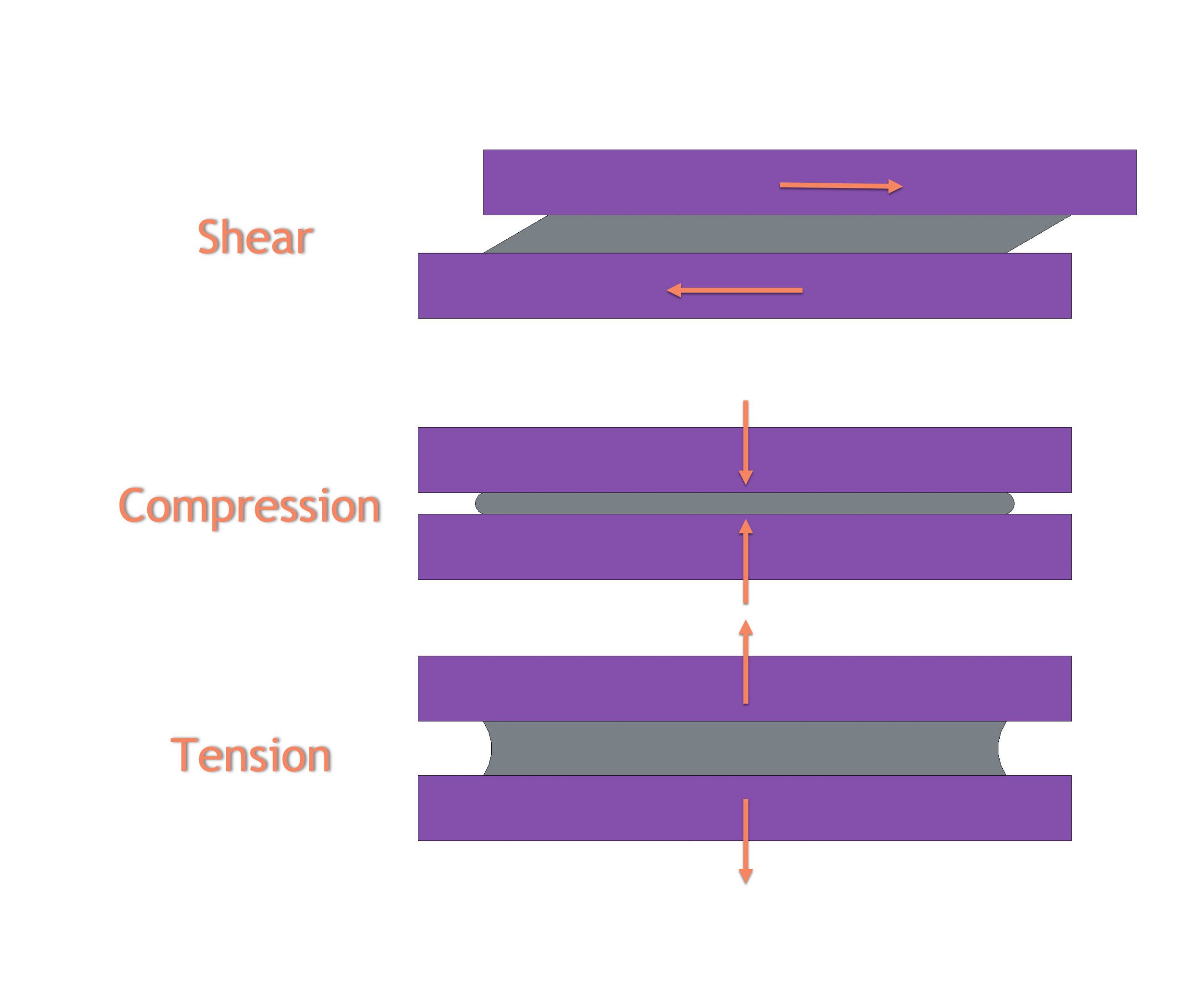
Each grade of tape will have a recommended load rating for these different forces. It is essential to reference the manufacturer’s website for those specifications. When in doubt on strength properties, we highly recommend adding more surface area to the tape. If your product starts failing in the field, the cost of brand damage and replacement could make the extra investment in tape seem small.
Surface Preparation
The major manufacturers have recommendations for the surface preparation of different substrates. For example, prior to bonding tape to plastics, there are specific adhesion-promoting chemicals applied to the surface of the plastic. The same is true for other substrates, like glass. Not all substrates require adhesion-promoting chemicals; however, at the very least, the surface should be as clean as possible before applying tape.
Note: Although these tapes are strong, if they fail, it will most likely be through the middle of the foam (cohesive failure). Cohesive failure means that the tape did not disconnect from each substrate; instead, it “tore” through the center foam section, leaving remnants of the tape on both sides of the part. The image below shows an example of cohesive failure between glass and a plastic part. You can see the tape failed as expected during testing.
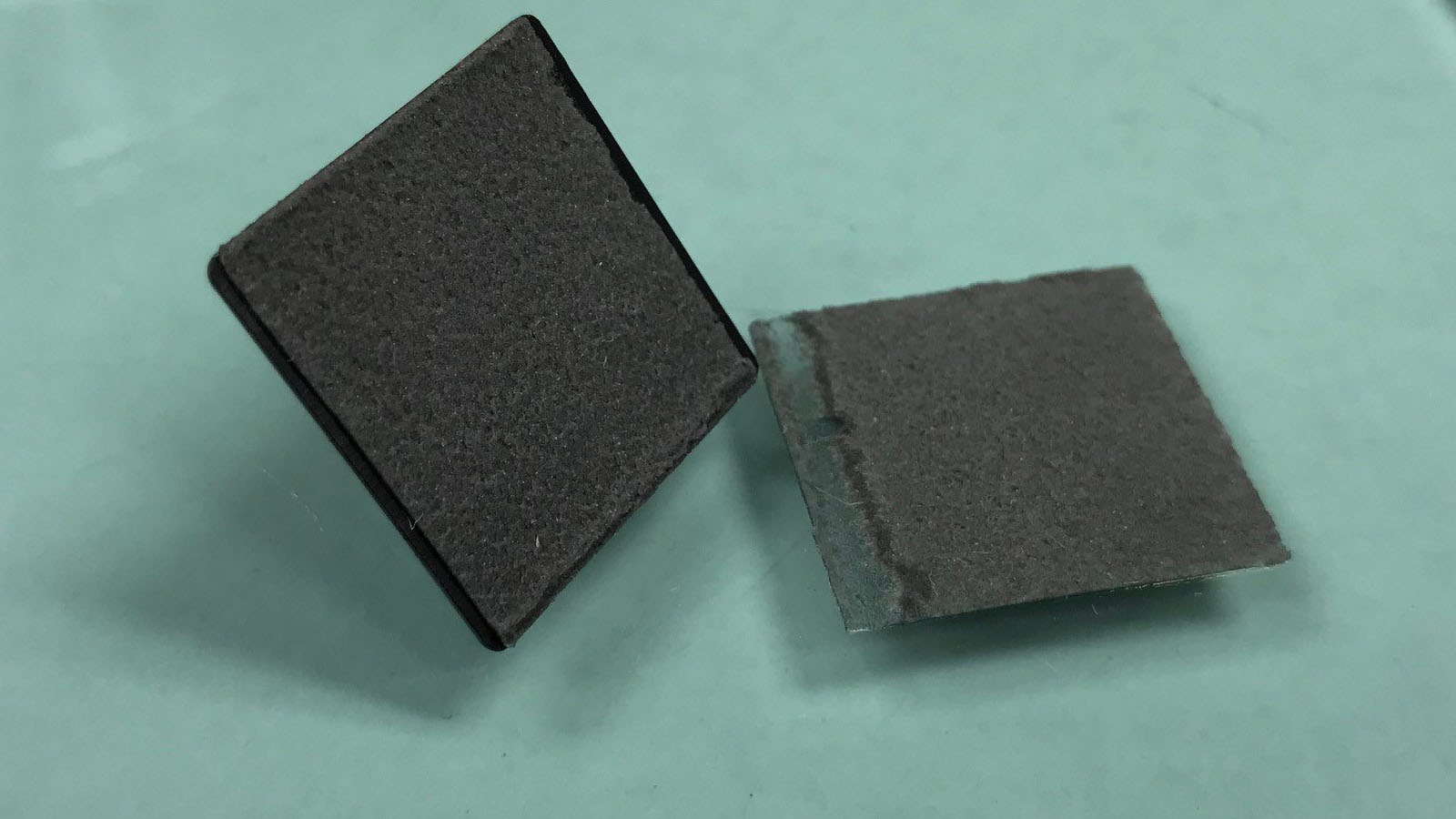
One of the advantages of using tape is the ability to make two contoured parts stick together. In order for this to work, the contour needs to match closely. The tape can absorb some variations is surface features, but without proper contact (wet out), the surfaces will not adhere properly and will eventually fail. The image below shows a part attached to a piece of glass. You can see that the contact area between the tape and glass in not ideal, as only half of the tape is in contact with the glass. This low wet out condition will reduce the strength of the connection and may eventually cause the connection to fail.
Below is an enhanced image showing wet out through a piece of glass. The lighter areas are in contact with the glass and the darker areas are not. This component is attached using only 50% of the holding area (50% wet out). You can imagine that this part would not yield optimum performance.
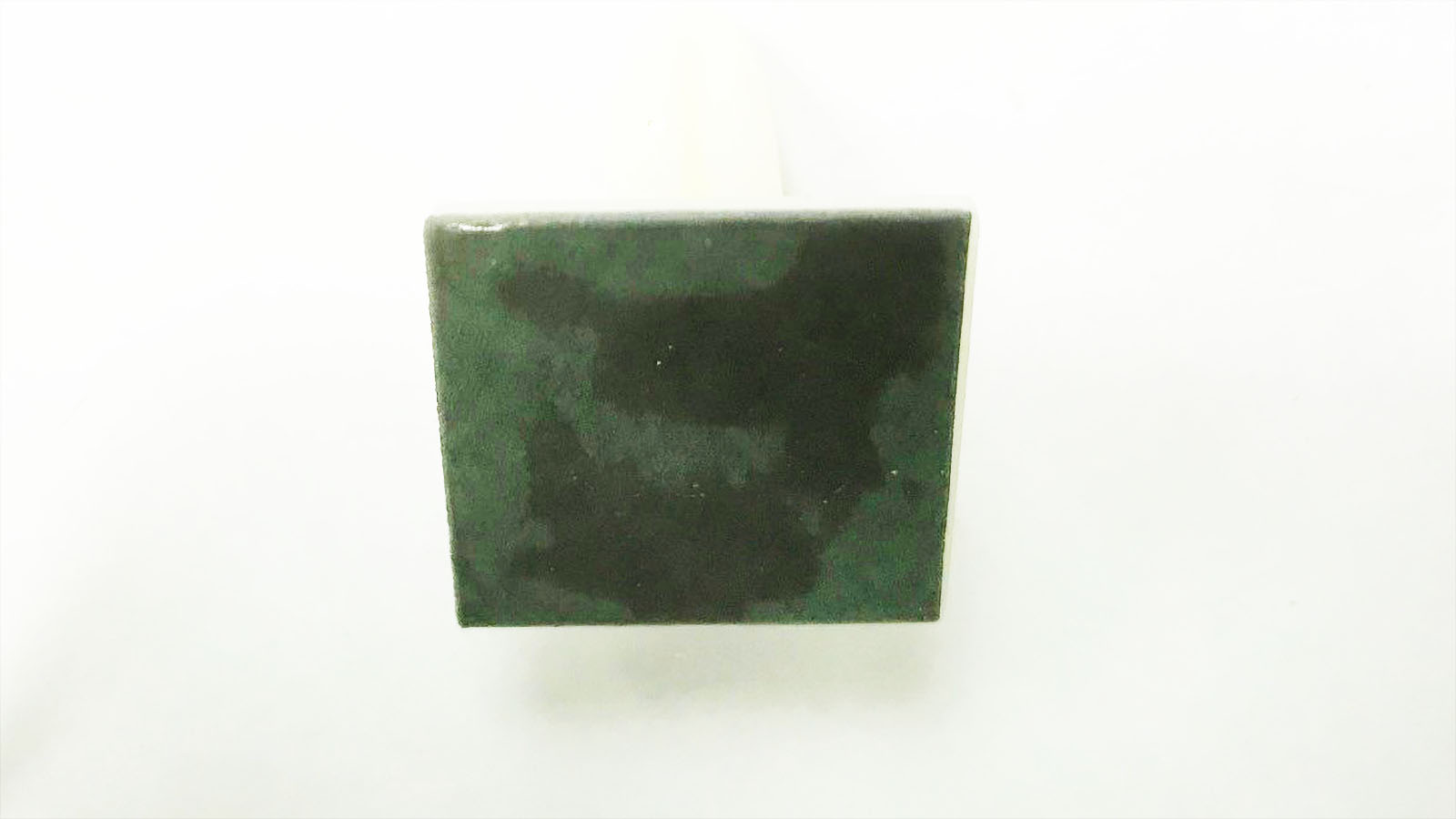
Tape Converters
The supply chain has a few layers to it that will help with your understanding of the tape and cost savings opportunities. Manufacturers, like 3M, produce all the various grades of two-sided tape in bulk. Typically, these are four-foot-wide rolls that are hundreds of feet long. Tape converters are the next layer in the supply chain. These businesses buy tape in bulk and cut (convert) the large rolls into whatever their customers need. The converters can produce just about any design to fit various applications.
Generally speaking, the more complicated the conversion process, the higher the cost. That is, a basic square of two-sided tape is probably going to be more cost-effective than an oddly shaped die-cut piece. However, because of the various types of tape and different conversion methods, there’s no hard rule as to what kind of tape or method is more or less cost-effective.
Like other aspects of injection molding projects, it’s best to get everyone involved early in the design process. In the case of using two-sided tape on an injection molded part, it’s best to have a molder and converter involved during your design process. Leveraging the experience of each will yield an optimal design, both from a functionality and a cost perspective.
Foam tape application is one of several value added services offered by Basilius. These services are an extension of Basilius’ turn-key design, tooling, and injection molding capabilities.

